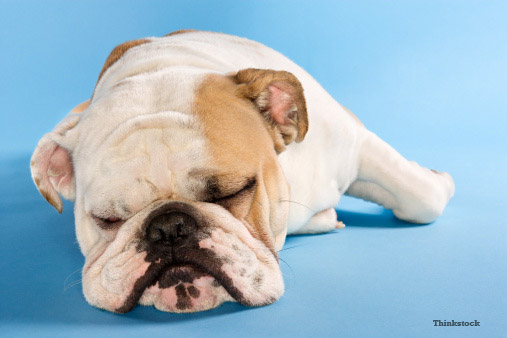
Kelly Serfas, a Certified Veterinary Technician in Bethlehem, PA, contributed to this article.
Pet parents often worry that their dog is too old for anesthesia. This is a huge misconception that prevents many dogs from getting the surgery they need. As we often say, “age is not a disease.”
That said, we do not take anesthesia lightly in patients of any age, and certain precautions should be taken for senior dogs. Here are 7 facts that may help you feel more secure when your senior needs anesthesia:
1. Fatal complications from anesthesia are very rare
According to a study posted by the the National Center for Biotechnology Information (NCBI), the average death rate under anesthesia is around 0.2%. Said otherwise, an average of 99.8% of pets, regardless of their age or health status, survive anesthesia.
2. Anesthesia dosing is carefully selected
There is no "one size fits all" anesthesia dosage. Anesthesia drugs are chosen and calculated based on body weight, health issues, breed, temperament and even anticipated length of anesthesia and pain involved with the surgery. We now have the luxury of choosing from multiple anesthesia drugs, depending on the pet’s particular needs.
3. A workup makes anesthesia safer
A thorough physical exam should be performed on every patient prior to anesthesia. In addition, what is called a “full workup” helps vets understand the "overall picture." This includes blood work and a urinalysis. Such tests will show any changes in the function of organs, such as the liver or the kidneys.
Chest X-rays may be recommended. They will show the size of the heart and if there are any masses or concerning changes in the lungs. In order to know how well the heart is functioning, an EKG can be performed.
4. Your vet will consider all conditions before beginning anesthesia
Blood work abnormalities, diabetes, thyroid disease, high or low blood pressure, Cushing’s disease, heart disease and other conditions should be controlled prior to anesthesia, if at all possible. This may not be possible in all cases, for example in the case of a life-threatening emergency. But in most cases, when vets have the luxury of time, we can correct abnormalities to make the anesthesia smoother.
For example, if your dog has a low red blood cell count, a blood transfusion, prior to anesthesia and surgery, may be important.
Deciding when the time is right to perform anesthesia is part of the art of veterinary medicine.
5. Veterinarians know there is no routine anesthesia
“There are routine surgeries, but there is no routine anesthesia.” What does this common quote, invented by an anesthesiologist, mean?
Some surgeries are so common, that they become fairly predictable. However, with anesthesia, you are always at the mercy of an unpredictable complication. Fortunately, a good surgery and anesthesia team can anticipate and correct complications. Most complications are minor and easy to correct.
6. Monitoring will help protect your dog during anesthesia
Proper monitoring is an essential part of anesthesia. Monitoring includes keeping a close eye on breathing, heart rate, temperature, EKG, and oxygen level. Ideally it will also include watching blood pressure and CO2 levels.
Small changes can be seen right away. They help the doctor or nurse adjust the anesthesia to keep your dog in safe ranges. Some dogs may require additional monitoring such as diabetics, who should have their blood sugar level checked throughout the procedure.
7. Monitoring recovery will help keep your dog stay safe after anesthesia
Most clients are not aware that, as found on the NCBI website, the recovery period is actually riskier than the anesthesia period itself. More dogs get in trouble after they wake up, then when they are under anesthesia. Monitoring, and encouraging dogs to wake up smoothly will still involve the surgery and anesthesia team. Make sure that your dog will continue to be supervised after waking up from anesthesia.
Overall, dogs do great under anesthesia, regardless of their age or health status. Remember, we put dogs under anesthesia for good reasons: perhaps cleaning teeth, removing a tumor, or correcting laryngeal paralysis. As I always say, "anesthesia is not the enemy, the disease is the enemy."
If you are still concerned about your dog’s anesthesia, ask your veterinarian to consult with a board-certified anesthesiologist who can advise you of the safest anesthesia drugs and protocol.
Questions to ask your veterinarian:
- How exactly will my pet be monitored?
- What are the risks of anesthesia for my pet?
- What is done to make sure my pet is safe during and after anesthesia?
If you have any questions or concerns, you should always visit or call your veterinarian – they are your best resource to ensure the health and well-being of your pets.
